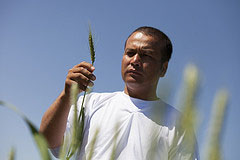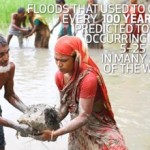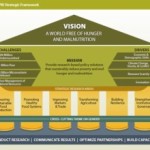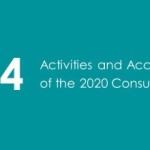The following post by Rajul Pandya-Lorch, Head of IFPRI's 2020 Vision Initiative, was originally published on the Global Food Security blog.
We need to be better prepared for shocks, says Rajul Pandya-Lorch of the International Food Policy Research Institute.
Poor countries and vulnerable people are being hit hard by a barrage of shocks: economic shocks such as volatile food prices and financial crises; environmental and natural disasters like droughts, floods, and earthquakes; and social and political upheavals including conflicts and violence. Climate change, competition for resources, and growing inequality and social exclusion are likely to intensify the risks for food and nutrition security.
We need to get much better at predicting shocks, preparing for them, and devising coping strategies to create resilient agricultural and livelihood systems that enable people to not only bounce back to where they were before, but become even better off.
The concept of resilience is currently the subject of wide attention in the development community, but resilience in the context of food and nutrition security is less widely discussed. Consequently, the International Food Policy Research Institute’s (IFPRI) 2020 Vision Initiative is facilitating an international conference on ‘Building Resilience for Food and Nutrition Security’ in Addis Ababa, Ethiopia, on May 15-17.
Defining solutions
Given the large number of poor people who depend on agriculture for both food and livelihoods, creating a more resilient food and agriculture system is critical.
For instance, it is crucial to expand farming practices that can be productive even in situations of stress, such as drought. Stronger agricultural markets can help farmers both get the inputs they need when they need them and sell their products for profit. Better water and soil management practices, improved seeds, and greater biodiversity can help make agricultural systems and farmers more resilient to weather extremes and climate change. Well-functioning value chains, market information systems, careful management of food reserves, trade policies, and price stabilization tools can help prevent and dampen market shocks.
More broadly, it is important to strengthen the capacities of institutions. Strong local, community, and large-scale institutions are needed to help prepare for, cope with, and recover from shocks. Informal institutions, such as social networks, have traditionally played a role in preventing and coping with shocks. In Ethiopia, for example, burial societies called iddirs not only help families meet funeral expenses, but also provide cash or loans for other kinds of shocks, including fire, loss of livestock, or illness. New interventions should build on these existing networks instead of seeking to replace them.
At the same time, it is essential to invest in institutions and mechanisms that can monitor environmental and human-caused risks and provide early warning. In Bangladesh, for example, the development agency Helen Keller International established a program to monitor people’s well-being and food security every two months – often enough to capture the impacts of even short-term shocks. When unprecedented flooding struck the country in 1998, these data helped shape efforts to assist affected people.
In addition, we have experience with several kinds of instruments for helping households deal with shocks. One example is safety net programs, such as food and cash transfers, which provide resources that help households smooth consumption. Ethiopia’s Productive Safety Net Program, which seeks to target benefits to the most vulnerable people and to make food and cash transfers more predictable, has been shown to improve people’s food security. It includes a public works program focused on building community assets such as small-scale irrigation systems and feeder roads.
Safety net
Another set of instruments – insurance and credit – is still largely unavailable to poor people and farmers. Nonetheless, some innovations in crop and livestock insurance for poor farmers in drought-prone regions show promise. When insurance payouts are indexed to the weather experienced in a particular area and go to all farmers in that area, and not just a particular farmer, administrative costs are reduced and payouts are speedier. (See this GFS post from Michael Baron for more on this.)
The key to using these strategies effectively is to find the instrument that is appropriate to the particular shock, the context in which it occurs, and the timeline over which it happens. Some shocks, of course, require multiple interventions on several fronts.
And fundamentally, in addition to adopting these strategies and instruments, we need to improve human capacity for resilience.
Food and nutrition security, for example, makes people more resilient by improving their health, their physical and cognitive abilities, and even their earning capacity. In turn, greater resilience to shocks helps strengthen people’s food and nutrition security by reducing episodes of hunger and undernutrition.
Questions remain about what kinds of shocks are most likely in the coming years, how to measure resilience, why some people and communities are more resilient than others, and what trade-offs are involved in investing in resilience compared with other development strategies. Here is where we hope the 2020 Vision conference in Addis Ababa will contribute insights.
As we come to terms with living in a world of shocks, it is clear that building resilience must play a role in the effort to end hunger and poverty sustainably.






